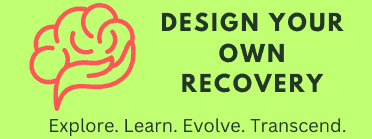“The object of life is not to be on the side of the majority, but to escape finding oneself in the ranks of the insane.”
–Marcus Aurelius
Self-Design Recovery is a new approach to recovery acknowledging that addiction, at its core, is a mental health condition. Medical professionals categorize addiction as a “substance use disorder”, sustaining the practice of affixing additional words that contribute nothing to our understanding. Most alcoholics and addicts would agree that addiction is a disorder consisting of both physical and psychological elements. Many would argue a metaphysical (or “spiritual”) ailment is a key component. Some, both in and out of the medical profession, argue it’s a disease. Psychiatrists argue addiction’s defining characteristic is emotional immaturity. Religious people might call addiction a sin or a manifestation of a demonic influence.
So, who is right? A new definition of addiction that conveys the broad scope of the problem might be: A life derailment. Addiction affects every area of the sufferer’s life; no train car is left unscathed. Westerners love to break problems into their constituent pieces and put them in separate containers – but this approach has its drawbacks for extremely complex systems with interacting parts. If every element of an individual’s life is a part of the problem, what are we to do? How do we put Humpty Dumpty together again, especially if he was not put together properly in the first place? How do we go about fixing everything?
That is exactly what Self Design Recovery is about.
Regardless of how one specifically categorizes addiction, the fact that it is, in addition to other things, a medical issue is now beyond dispute. Thus we can look to modern medicine for a starting place. The most effective treatment strategy is one in which the addict takes ownership of, and directs, their recovery by creating a plan which incorporates their values, preferences and specific needs.
Several US studies1 2 3 reported coordinated care trials that actively engaged patients with chronic disease (disease in the classic medical sense) resulted in significantly better medical outcomes. Health and well-being are fostered by engaged and activated patients who participate in the decision-making process by weighing the trade-offs between benefits and liabilities. These studies have shown that those patients who actively participate report increased knowledge about their condition, have more realistic perspectives and expectations, have reduced conflict and anxiety, and have higher levels of satisfaction.
But above all else they are more likely to adhere to a recovery plan that they had a hand in constructing and are invested in. As a result, outcomes are improved, even when the plan is less than optimal. For addiction recovery, success in sticking to a recovery plan is paramount.
There are the beginnings of a shift from a paternalistic model of addiction care (usually 12-step based), in which addiction therapists and counselors tell patients what they should do (often ineffectively), in favor of forming a collaborative partnership with addicts. The intention is to educate, assist the addict in making constructive decisions, create conditions beneficial for continued recovery, develop systems that serve as a catalyst for personal growth, and to sustain interest in ongoing recovery.
This approach is not in direct opposition to 12-step recovery programs; in fact there is much to learn from them. We hope to adopt the decades of collective experience gleaned from these traditional programs and greatly expand upon it. 12-step programs are one window that provide one perspective into the addiction problem. The authoritative one-size-fits-all approach is not effective for a majority of people, and we hope to present additional perspectives regarding the human condition and addiction – and, of course, strategies to overcome adversity.
One of the critiques of the personal empowerment approach is the addict does not possess a properly functioning mind and therefore is not capable of creating an escape plan for his self-inflicted crisis. The situation is akin to a traveler lost in the jungle. Not only can he not see the destination, he doesn’t know which direction it lies or even what he is looking for; not only can he not see a path, he doesn’t even know a path exists. He is lost without a map or any clues as to where to find one. However discouraging this may sound, it fails to take into account the unparalleled ability of human beings to overcome tremendous adversity. Our brains are astonishingly versatile and possess the characteristic neuroplasticity, meaning the brain has the ability to change and adapt in response to different conditions. This process involves the creation of new neural connections, the strengthening or weakening of existing connections, and the reorganization of neural networks. Every ancestor of every person alive today survived to reproduce – the chances of this happening, even for a single individual, are so astronomical as to be effectively zero. Each individual is the product the most capable (and lethal) genetic line to ever walk the face of the Earth. We are survivors, and even the most “hopeless” addict has excellent prospects once armed with a map.
Additionally, we hope to provide some illumination with which to read the map. That is, we intend to not only provide the vital information but also to connect the dots – to integrate the concepts into a cohesive whole. And we find there is not one path but many. Our promise to you is to present a picture so powerful that it is impossible to assimilate without affecting a fundamental change in perspective. Welcome to the Kingdom.
“When this ultimate crisis comes… when there is no way out – that is the very moment when we explode from within and the totally other emerges: The sudden surfacing of a strength, a security of unknown origin, welling up from beyond reason, rational expectation, and hope.” –Emil Durkheim
To read our privacy policy, click here. For instructions on deleting your account and data, click here.
